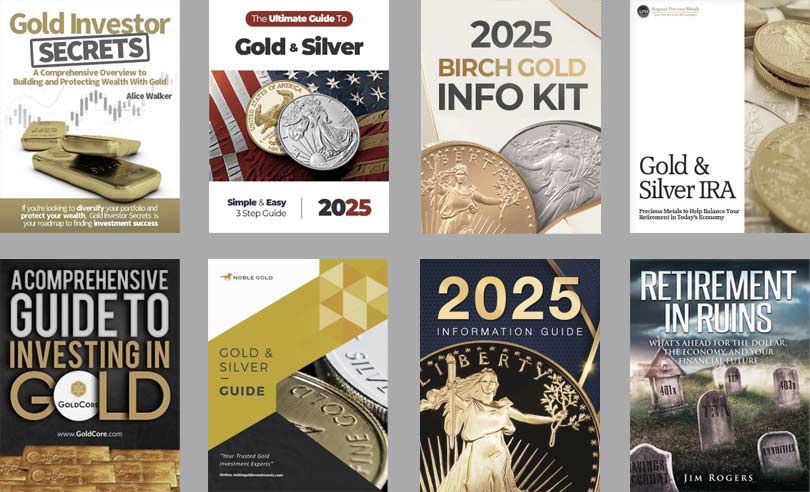We’re Being Told That Sound Money is Back – But is it Really True?
 Bullion.Directory precious metals analysis 06 September, 2024
Bullion.Directory precious metals analysis 06 September, 2024
By Peter Reagan
Financial Market Strategist at Birch Gold Group
Step back with me, for a moment, to just four years ago. When you went to the grocery store, when you paid your power bill, was the cost the same then as it is now?
If you’re like most Americans, you likely answered “no” to that question. And the reason is clear: inflation.
But what is inflation, really?
Most people see inflation as an increase in prices because that’s what it feels like when your hard-earned dollars don’t go as far as they did before.
Really, though, inflation is an increase in the money supply which causes a devaluation of the currency. You can think about it like any other thing in the marketplace. When there are more dollars in the market, there is less demand for each dollar, so it’s worth less.
Inflation is getting better, right?
But some people think that inflation may not be as big a deal as you and I think when we go to the store.
Charlie Bilello put it this way:
For the 3rd month in a row, the Fed’s preferred measure of inflation (Core PCE) held steady at 2.6%. While still above the Fed’s target rate of 2% and higher than at any point from September 2006 through March 2021, the market is betting this is low enough to warrant a rate cut in September.
Sounds like good news, right? After all, inflation is decreasing to a “manageable” level, and, if true, that means a healthy, growing economy.
The reason that Bilello gives for believing that we’re finally through the worst part of this inflationary period is what is so strange.
Why has the inflation rate moved lower over the last two years? First and foremost, the return of sound money.
Yes, he actually said inflation was down because the U.S. dollar is “sound money” again.
What does he mean by that, though? Thankfully, he doesn’t leave us wondering. He clarifies:
After a record 40% increase in 2020-21, the U.S. Money Supply has decreased by 2% from the start of 2022 through today.
While the U.S. Money Supply (M2) has increased 1.3% over the last year (the biggest YoY increase since October 2022), it remains well below the historical average increase of 6.9% since 1960.
First off, it’s absolutely shocking that the U.S. money supply has been growing at 6.9% annually for the last 64 years. For at least 10 of those years, the money supply should’ve been constrained by the gold standard. (It wasn’t.)
Second, how is the money supply still growing during the Fed’s so-called quantitative tightening cycle? Remember, it’s easy for the Fed to create inflation. All they have to do is print more money. It’s making inflation go away, or “putting the inflation genie back in the bottle,” that’s a challenge.
So the Fed’s still increasing the money supply, even though they’re also trying to get inflation under control with higher interest rates. Pick one, Mr. Powell!
If the money supply is still growing, and prices are still rising, can we really say the dollar has become “sound money” again?
What the heck is “sound money,” anyway?
Which brings us to a big question: How much inflation is supposed to happen with “sound money” exactly?
To answer that question, you have to define what sound money really is. International monetary and finance expert Gerald P. Driscoll, Jr. puts it this way:
The concept of “sound money” evolved in the 19th century as many countries adopted the gold standard. It became associated with commodity money or “hard currency.”
“Commodity money” means money exchangeable for a specific quantity of a commodity, whether it’s a bale of cotton or a gram of gold.
“Hard currency” means money that’s actually made out of a specific quantity of a commodity like gold or silver.
“Fiat currency” on the other hand means currency that has value because the government says it does.
Here’s an example:

Top to bottom: Hard currency in the form of a Peace silver dollar, sound money in the form of a U.S. Treasury silver certificate and fiat currency. Courtesy of author’s personal collection.
Put another way, sound money is either made of or exchangeable for a fixed amount of an intrinsically valuable commodity. With hard currency like the Peace silver dollar, you don’t have to trust that the U.S. Treasury actually has 0.77344 troy oz. of silver in its vaults to hand over in exchange for the note. The intrinsic value is the money itself!
Sound money is no longer in circulation anywhere in the world. Instead, every nation issues a fiat currency like the U.S. dollar which has no value in and of itself.
So why did the entire world switch from sound money to fiat currency?
Because sound money makes it much harder for governments and central banks to play games with money. Sound money is relatively inflation-proof. That $1 face value Peace silver dollar, right now, is worth at least $21.61 as scrap metal alone (silver price currently $27.94/oz.). The BLS inflation calculator tells us the U.S. dollar’s purchasing power has declined 94.3% since the Peace dollar was minted in 1926.
Are you starting to understand why it’s a huge mistake to call the U.S. dollar “sound money”? After all, it’s lost some 20% of its purchasing power over the last three and a half years alone.
Don’t get me wrong. Slowing inflation is good news! It means our purchasing power is being destroyed slightly more slowly.
Which leads us to the next question…
Is it smart to depend on the dollar?
Other people analyzing this issue seem to have a viewpoint questioning the stability of the U.S. dollar, too.
This time, the analysis comes from International Monetary Fund researchers, who one would think knows a little bit about money. Serkan Arslanlp, Barry Eichengreen, and Chima Simpson-Bell put it this way:
Recent data from the IMF’s Currency Composition of Official Foreign Exchange Reserves (COFER) point to an ongoing gradual decline in the dollar’s share of allocated foreign reserves of central banks and governments. Strikingly, the reduced role of the U.S. dollar over the last two decades has not been matched by increases in the shares of the other “big four” currencies—the euro, yen, and pound. Rather, it has been accompanied by a rise in the share of what we have called nontraditional reserve currencies…
In other words, foreign governments and central banks previously hoarded U.S. dollars as a store of value. Those same entities, perhaps burned by the pandemic-era inflation or spooked by dollar weaponization are slowly seeking an alternative. A decreasing demand for U.S. dollars in foreign markets leads to a decline in the value or purchasing power of the dollar.
After all, because it has zero intrinsic value, the dollar’s “price” on the foreign currency market is set by nothing but supply and demand. Since the federal government seems determined to choke the world with an absolute flood of them ($7.1 trillion in the last three-and-a-half years alone!), it’s a pretty sure bet that the dollar’s headed in one direction.
Enough geopolitics. Why does this matter?
Can your financial future survive the death of the dollar?
AKA What does all this mean for me and my family?
Really, this is the biggest question that most people want answered, and the answer is pretty simple.
With a soaring national debt, which tends to lead towards inflation of the currency, along with a decreased demand for the U.S. dollar, it seems increasingly likely that the U.S. dollar will continue to decline in value.
And, if you keep all of your eggs in that one fragile basket, your financial future is in peril as well.
That’s why diversification is one of the biggest factors that determine whether you can successfully build the retirement of your dreams.
We recommend getting educated on the benefits of physical precious metals (the original sound money) and educating yourself on ways to minimize the effect of inflation on your finances.
You should know that those same governments and central banks who are turning away from the dollar are stocking up on physical gold bullion in record quantities.
Peter Reagan

Peter Reagan is a financial market strategist at Birch Gold Group, one of America’s leading precious metals dealers, specializing in providing gold IRAs and retirement-focused precious metals portfolios.
Peter’s in-depth analysis and commentary is published across major investment portals, news channels, popular US conservative websites and most frequently on Birch Gold Group’s own website.
This article was originally published here











 Material provided on the Bullion.Directory website is strictly for informational purposes only. The content is developed from sources believed to be providing accurate information. No information on this website is intended as investment, tax or legal advice and must not be relied upon as such. Please consult legal or tax professionals for specific information regarding your individual situation. Precious metals carry risk and investors requiring advice should always consult a properly qualified advisor. Bullion.Directory, it's staff or affiliates do not accept any liability for loss, damages, or loss of profit resulting from readers investment decisions.
Material provided on the Bullion.Directory website is strictly for informational purposes only. The content is developed from sources believed to be providing accurate information. No information on this website is intended as investment, tax or legal advice and must not be relied upon as such. Please consult legal or tax professionals for specific information regarding your individual situation. Precious metals carry risk and investors requiring advice should always consult a properly qualified advisor. Bullion.Directory, it's staff or affiliates do not accept any liability for loss, damages, or loss of profit resulting from readers investment decisions.

Leave a Reply